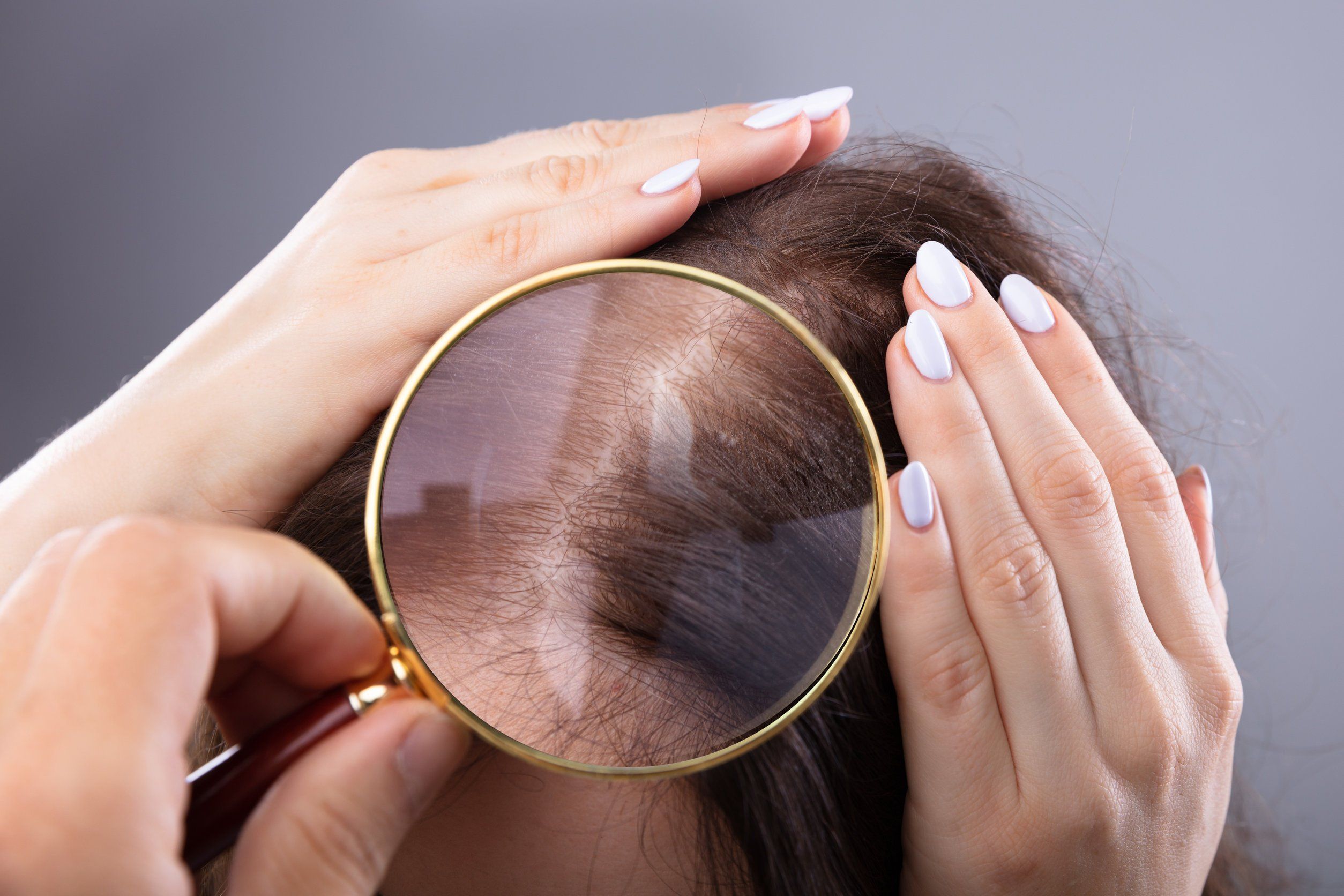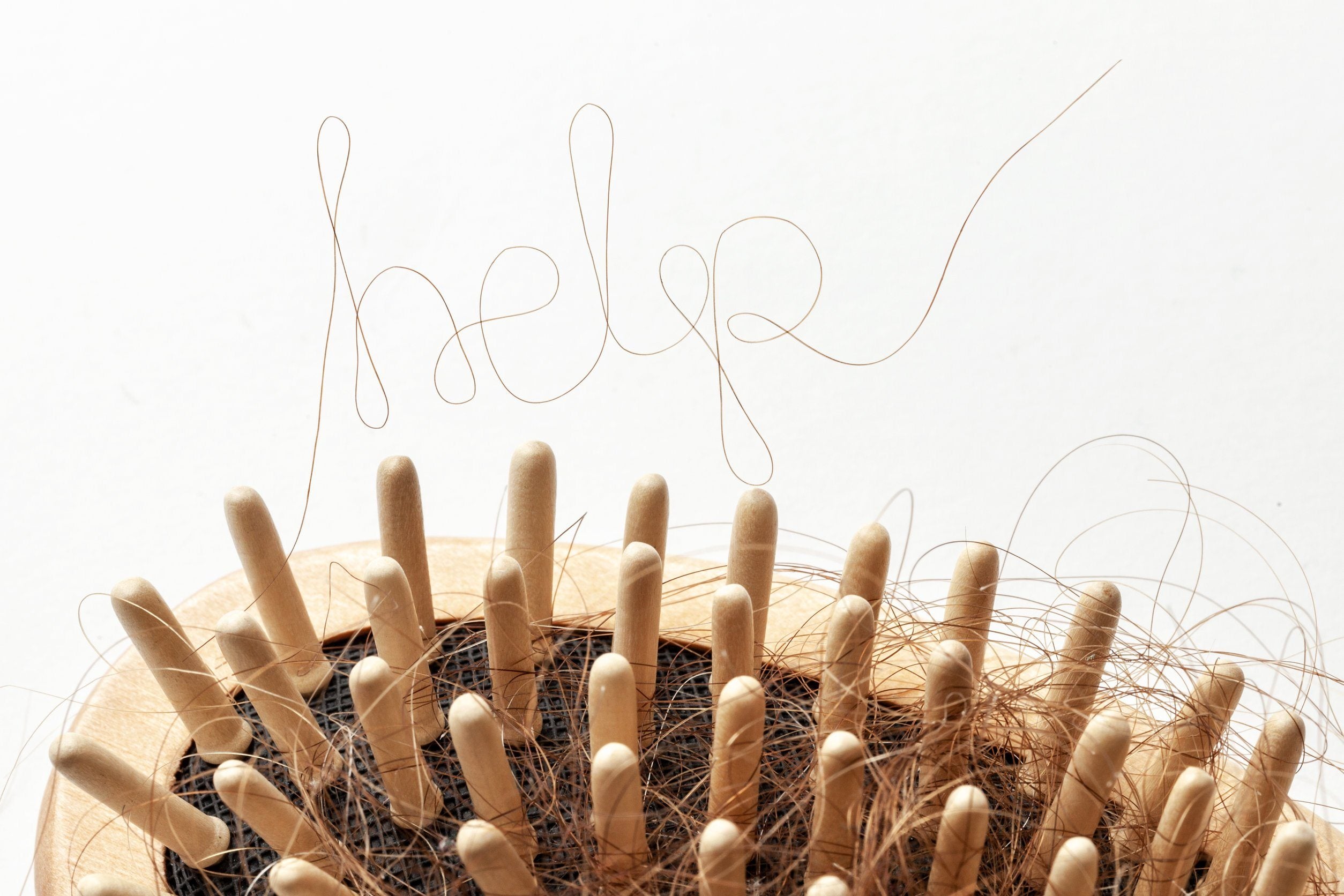
Treating Alopecia: 7 Types of Hair Loss
The type of hair loss you’re suffering from can often impact what kind of treatment you’ll need to get over this frustrating condition.
While alopecia is the umbrella term for diverse types of hair loss, in today’s blog, we’ll dig deeper into seven (of) the most common hair loss types and one more condition that could be causing your hairs to fall off.
1. Male/Female Pattern Baldness - Androgenetic Alopecia
This is like the most common hair loss problem generally. It affects some 50 million men and 30 million women in just the US alone. It begins in most cases after puberty.
- In females, it starts with a slow and gradual hair thinning process that rarely leads to baldness.
- In men, the first hair thinning starts around the temples and top of the head before it leads to more pronounced baldness.
While it’s caused by several factors, most of which are tied to hormonal changes over time, it can be treated so that you can ‘wake’ your follicles and regrow your lost hair.
2. Telogen Effluvium
Telogen Effluvium has seen a sharp increase since the COVID-19 pandemic began. This type of hair loss is mostly experienced after a stressful life experience.
What happens here is that too many hair follicles are entering the resting phase without starting the growth phase. So, the hairs continue to fall off without new growth.
Causes include surgery, childbirth, thyroid imbalance, Iron deficiency in women, medications for acne and blood thinners, and birth control. Fortunately, it is a reversible condition that can be treated.
3. Anagen Effluvium
This type of hair loss happens in two ways;
- EITHER as an abnormal loss of hair during anagen (first phase of hair growth cycle),
- OR as an unwanted reaction to drugs during processes like chemotherapy which then impacts hair follicle production to induce hair loss.
4. Alopecia Areata
Alopecia Areata is caused by an autoimmune disorder.
The condition affects about 7 million Americans and is characterized by a sudden development of often circular bald patches.
While it’s not painful, it could be frustrating to watch your hair fall off. The hairs fall off due to the body’s immune system inducing an attack against the hair follicles.
5. Alopecia Totalis
Some cases of Alopecia Areata (not all!) go on to become Alopecia Totalis, a complete loss of hair on the head.
While the actual cause is unknown, it’s thought to be caused by an autoimmune disorder in a similar way to Alopecia Areata. To manage the condition, you want to at least:
- Avoid hair scalp trauma
- Reduce stress
- Eat healthy foods
- Use only hair care products that support your hair health.
6. Cicatricial Alopecia AKA Scarring Alopecia
This type of hair loss is caused by inflammation that destroys the hair follicles and then causing scarred tissues to form in their place.
This type of hair loss comes in different forms and could lead to irreversible hair loss if not managed early on. The first symptoms include itchy and swelling lesions on the scalp (could be red or white) that look more like a rash.
The different forms include;
- Lichen Planopilaris: this happens when Lichen Planus affects the scalp causing a flaky rash appearance accompanied by the hair falling out in clumps.
- Discoid Lupus Erythematosus: This is caused by an autoimmune disorder that causes painful sores and scarring on the scalp.
- Folliculitis Decalvans: this hair loss is characterized by an inflammatory disorder that causes redness, swelling, and lesions of the scalp often accompanied by itchiness or pus. The condition destroys hair follicles, is not reversible, but can be controlled.
- Dissecting Cellulitis: this is characterized by a rare condition that causes pustules or lumps to form on the scalp and ultimately scarring the scalp to induce hair loss.
- Frontal Fibrosing Alopecia: it’s a form of receding hairline issue caused by hormonal changes and is most common among post-menopausal women.
7. Tinea Capitis
This type of hair loss is caused by ringworm. This fungal infection is characterized by irritation, redness, and flakiness on the scalp and could cause loss of hair in the affected areas. It is most common among children.
Things and conditions that could trigger hair loss
While hormonal changes, as well as certain infections, could induce hair loss, certain products, and hair styling techniques could also trigger the condition.
Many of the products that have been fingered in inducing Central Centrifugal Cicatricial Alopecia include certain relaxers, perms, oils, gels, curling irons, extensions, blow dryers, dry shampoo, and pomades, among others.
Hair shaft abnormalities and hair loss
Some abnormalities of the hair shaft can cause hair to thin and weaken.
This causes hair loss that rather than happens at the follicle level instead happens because of continuous breaking of the hair shaft. Some others include;
- Loose Anagen Syndrome; a condition common in children that often causes the hair to be pulled off too easily.
- Tractional Alopecia; hair styling techniques such as tight ponytails that puts the hair at risk of breaking.
- Trichotillomania; a mental disorder characterized by a recurrent and often irresistible urge to pull off one’s hair.
- Hypotrichosis: a rare condition where little hairs grow on the scalp and body. Can make people seem bald as early as 25 years of age and can be very challenging to regrow.
Conclusion
Some hair loss can be regrown and others can cause irreversible baldness.
The good news is that even in cases where the condition might cause permanent baldness or hair loss, the process can often be slowed or halted if you discover it early and seek treatment before it causes further damage.
Proper sleep and relaxation, reduced stress, healthy eating, and exercise, among other things have been known to promote hair health. And while it’s important to abstain from products that can damage your hair, you want to include more products like the KeraFactor line of products into your hair care routine since they can help both with halting the hair loss process and stimulating the rejuvenation process.



